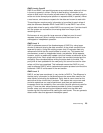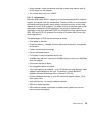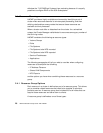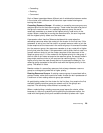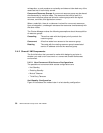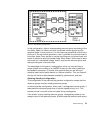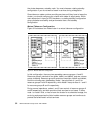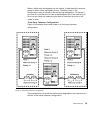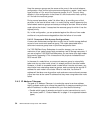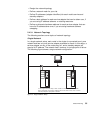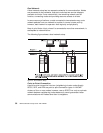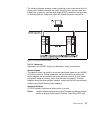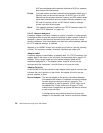
Cluster Planning 31
Figure 2. Hot-Standby Configuration
In this configuration, there is one cascading resource group consisting of the
four disks, hdisk1 to hdisk4, and their constituent volume groups and file
systems. Node 1 has a priority of 1 for this resource group while node 2 has a
priority of 2. During normal operations, node 1 provides all critical services to
end users. Node 2 may be idle or may be providing non-critical services, and
hence is referred to as a hot-standby node. When node 1 fails or has to leave
the cluster for a scheduled outage, node 2 acquires the resource group and
starts providing the critical services.
The advantage of this type of a configuration is that you can shift from a
single-system environment to an HACMP cluster at a low cost by adding a
less powerful processor. Of course, this assumes that you are willing to
accept a lower level of performance in a failover situation. This is a trade-off
that you will have to make between availability, performance, and cost.
Rotating Standby Configuration
This configuration is the same as the previous configuration except that the
resource groups used are rotating resource groups.
In the hot-standby configuration, when node 1 reintegrates into the cluster, it
takes back the resource group since it has the highest priority for it. This
implies a break in service to the end users during reintegration.
If the cluster is using rotating resource groups, reintegrating nodes do not
reacquire any of the resource groups. A failed node that recovers and rejoins



